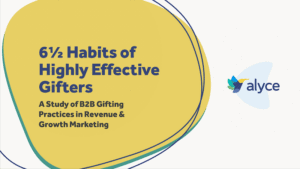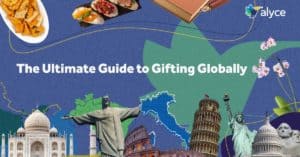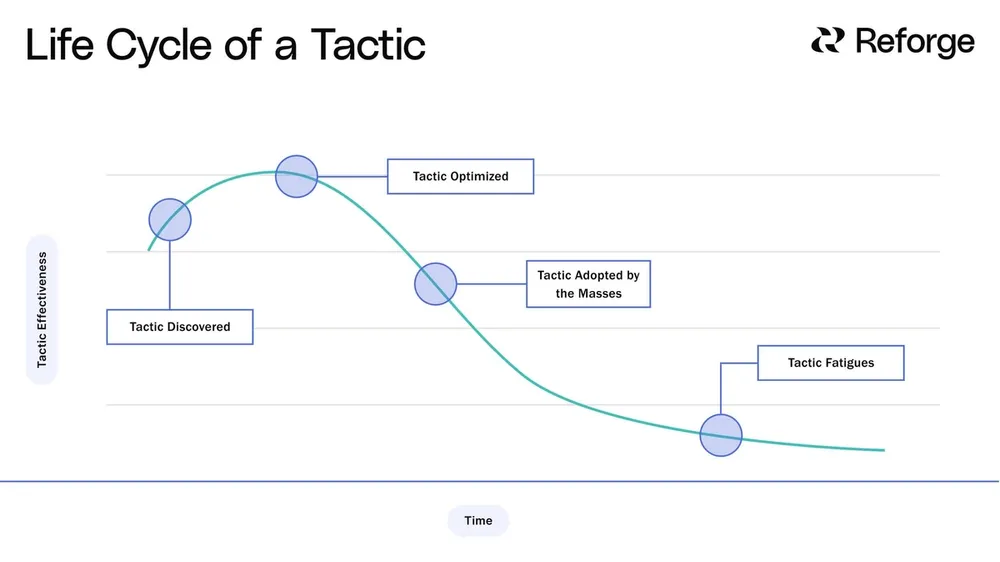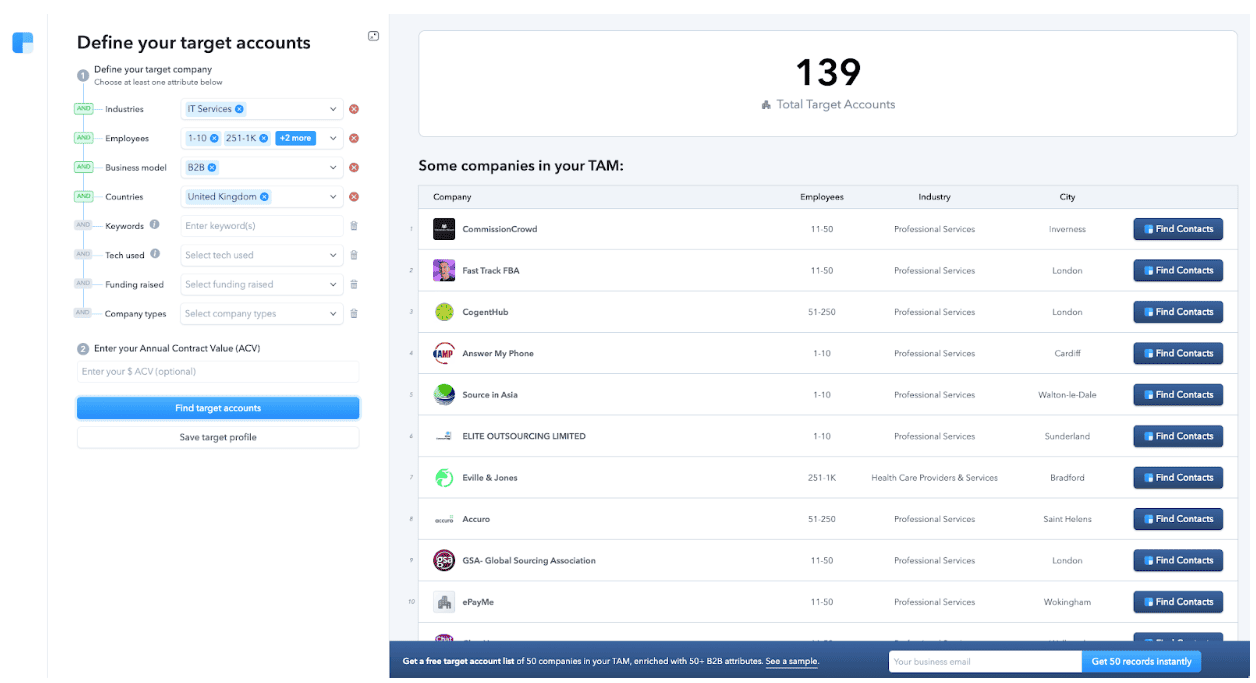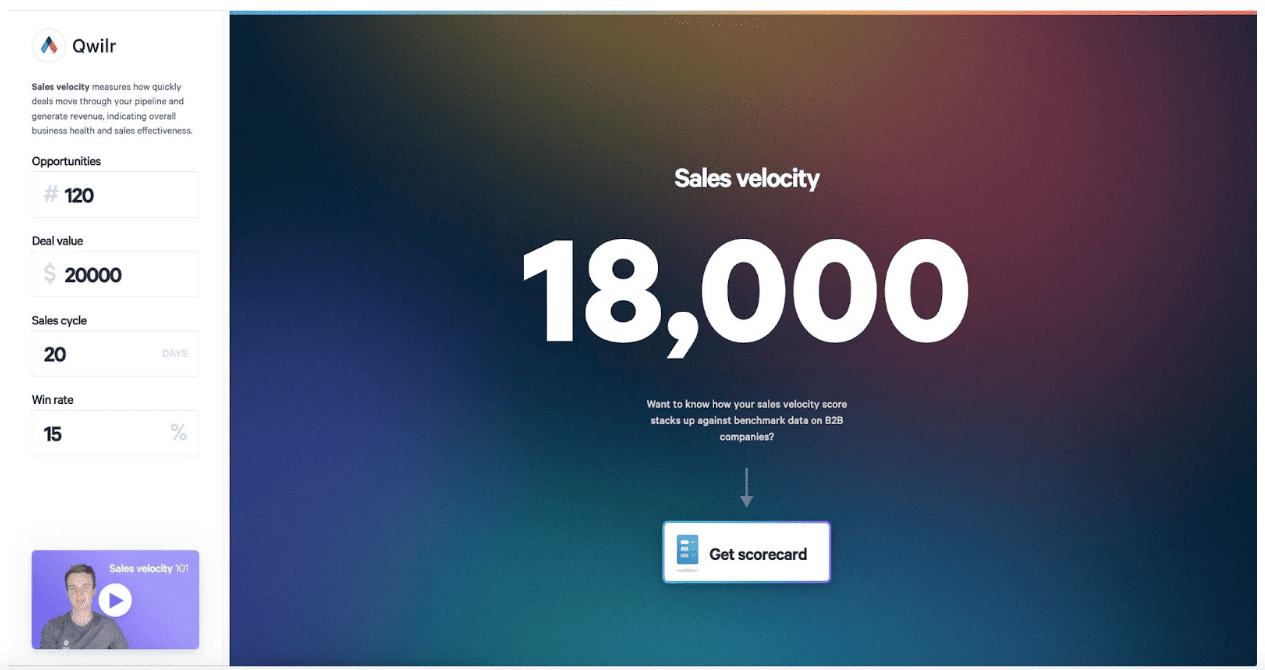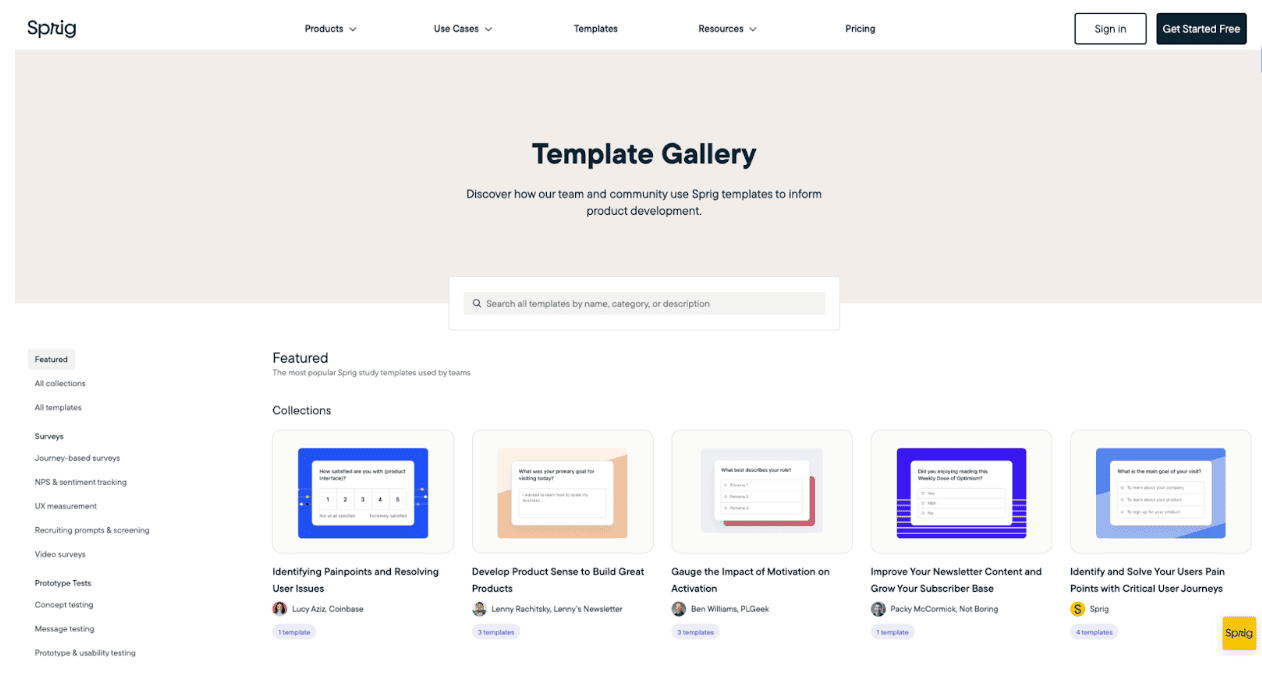
The economy has been sluggish, startup investments are down, and many teams have cut budgets and frozen headcount plans.
So, where do you place your bets heading into next year?
Marketing teams are being asked to “do more with less” — meaning, drive more efficient growth. This requires a seismic shift in strategy and mindset.
B2B marketing has moved away from “grow at all costs” to a responsible growth model, where controlled experimentation with new tactics and channels is supported by doubling down on what’s driving profitable growth.
In this guide, we’ll explore efficient growth marketing tactics and channels that are actually working right now — plus which high-growth startups are using them.
What are growth marketing tactics?
Growth hacking, demand generation, performance marketing, conversion rate optimization. Sometimes, being a marketer feels like playing buzzword bingo.
For the purpose of this article, growth marketing as defined by Segment, is the umbrella term for an iterative, data-driven approach to increasing customer acquisition, retention, and revenue.
Growth marketing teams typically include capability and specialization across demand generation, inbound marketing, analytics and ops, and lifecycle marketing. Growth marketing is adjacent to both product marketing and brand or corporate marketing.
Most marketing leaders will agree that successful growth marketing involves the following:
- Messaging across the entire customer journey across key channels.
- Utilizing modern tools to understand data and the associated metrics.
- Creating and testing hypotheses and leveraging A/B testing capabilities to improve the user experience of your messaging, regardless of the channel.
If you’re just getting acquainted, Emily Kramer has a great piece on the role of growth marketing and org design.
If you’re interested in a deep-dive on demand generation, you can go check out this guide I recently published on HubSpot.
What has changed, and why?
The key difference heading into next year is that marketing teams are expected to be operating in the green (profitable) whereas previously, it was acceptable to be operating in the red (unprofitable) as long as things were scaling.
Jon Miller, the founder of DemandBase, even admitted that the “predictable revenue” style marketing playbook he helped create, doesn’t work anymore.
We’ll look at what’s happened and why — plus a few case studies from our own learnings and specific companies doing growth marketing well.
Costs of acquisition are up, and conversion rates are down
Let’s take the example of a company called Loxo, who recently paused all Google Advertising, full stop.
Their head of marketing, Sam Kuehnle, says that historically in his category the avg. cost per click was $1 and conversion rates were 9%.
Today, the avg. cost per click is $5 and conversion rates are at 7%.
So it’s 5x more expensive to book a demo, meanwhile conversion rates are down by 20%, compared to historical averages.
The lifecycle of tactics is getting shorter
Looking at the first three quarters of 2023, the lifecycle of tactics is getting shorter than ever. This was already happening because of short attention spans and everyone looking for the next big thing, but now, it’s accentuated by the popularity of AI tools.
Not to mention — everyone in B2B is basically just copying each other.
Source: https://www.reforge.com/blog/growth-loops
Tactic adoption typically follows a right-skewed distribution curve. The tactic is first discovered, and it gains some initial popularity as people begin to test it.
Next, it’s adopted by the masses and becomes more widely used and accepted. Eventually, a new tactic becomes a more traditional marketing play. We start to see tactic fatigue, and people look for the next big opportunity.
The cycle then continues over and over. What is changing now is that while it used to be that a cycle could last for a few years, now these cycles are shortening and some tactics are coming and going in as little as weeks or months. What was working well six months ago may now be considered dated.
This is basically a better articulation of the law of shitty click throughs, which I recently challenged on LinkedIn regarding the decline of chat bots.
Buyers have more information at their fingertips than ever before
Today’s buyers are more informed than ever, thanks to the vast amount of information readily available at their fingertips. While buyers would make purchase decisions in the past based on conversations with a sales rep or some light desktop research, this is no longer the case.
Modern buyers are savvier – they delve deeper into vendor research, scrutinizing both the reputation and peer reviews.
Refine Labs refers to this as the dark social era.
They say, “Hyper connection of B2B peers through digital channels like social networks and communities scales advocacy, sharing and consumption of content, and other forms of word of mouth.”
How to think about growth marketing tactics & channels heading into next year
It’s best to think of your growth marketing tactics and build your playbook in terms of how your business can:
- Create demand
- Capture demand
- Convert demand
- Expand accounts
Clearbit’s former Director of Demand Generation, Colin White, reorganized his team around these four marketing outcomes.
He said, “To be honest, we were focused a little bit too much on our leading indicators (Qualified Leads), which historically led to our lagging goals (Pipeline), but with the current macro environment, didn’t anymore. That led to a whole whack of problems, all the classic ones we tried to avoid. Needless to say, we needed to change it up, especially based on the current market.”
If you’re looking to level up your growth marketing strategy, using this framework can be helpful to ensure you don’t fall into the trap of solely focusing on one part of your funnel or get too caught up on tactics and channels, at the detriment of thinking about your growth strategy as one holistic program designed to attract, retain and grow valuable customers.
Eight tactics that are working right now in B2B
Create demand:
1. Offer free tools
To create more demand for your product, consider building free tools that ensure a memorable and differentiated experience for your buyer. Free tools typically go beyond free offers — for example, Pclub has created SaaS sales cold call scripts, which is an awesome resource, but free tools are typically a bigger iteration.
The free tools you offer ideally connect a common problem your buyer has with a solution your product solves at scale. Your team can create a landing page for each tool you offer and drive traffic to the pages by using SEO, organic LinkedIn, and performance marketing tactics.
How Clearbit did it: Clearbit is well known for free tools, like their TAM Calculator and Weekly Website Visitor Report. These tools help prospects quickly understand their total addressable market (TAM) and see who visits their website each week.
Free tools work well for Clearbit because there is a direct tie-in with their product, and these tools are relevant to their potential customers.
Often, the best tools are key product features (not new products) with low time to value and an easy-to-understand or compelling value proposition.
For example, Clearbit’s visitor report is a sub-part of their ‘Reveal’ product. If you see value in their visitor report, you’re a natural fit for their broader suite of enrichment and buying intent solutions.
How Qwilr did it: Like Clearbit, Qwilr also pulled this off with their own Sales Velocity Calculator. They chose to focus on sales velocity because it’s important to their ideal buyer, not always well understood and a core part of Qwilr’s analytics functionality.
2. Deploy the ‘LinkedIn 1-2 punch’
Any B2B growth marketer will testify that LinkedIn, if leveraged effectively, can be a powerful channel for demand creation.
One method to maximize LinkedIn’s potential is what I term the ‘LinkedIn 1-2 Punch’. This strategy capitalizes on both LinkedIn’s organic reach and paid targeting while also utilizing a new ad feature that yields high engagement.
‘Punch 1’: Start by enabling founders, executives, or other key leaders in customer-facing roles to distribute your best content or ideas via organic LinkedIn posts.
‘Punch 2’: Next, promote those same organic posts via LinkedIn’s thought leadership ad format to maintain the momentum. Unlike the typical LinkedIn ad format, this ad format amplifies the employee’s post, not a company post, and carries across the existing social engagement, which tends to be higher for employee posts.
Why this works: Punch 1 helps to get early engagement on your post and is a great way to leverage LinkedIn’s substantial organic reach. Punch 2 helps to extend the shelf life and stand out in feed from the accumulated engagement.
However, perhaps even more importantly, people engage with people. A message becomes significantly more impactful when attributed to a key figure, as they are more relatable than a generic B2B vendor.
Who’s doing this well: Dreamdata are doing this with some of their Account Executives (see here and here), presumably to build the profile and credibility of their customer-facing team.
Qwilr also did this with their AI page builder and co-founder, Mark Tanner, who pushed out a video post to his network (and beyond). Early engagement from the organic post was mostly people engaging directly with Mark, whereas later engagement from the paid promotion was skewed towards people tagging colleagues or folks in their network.
Capture demand:
3. Make it easy to get started by giving your templates away
When it comes to a product lead growth motion, a smart strategy you can use is to build out a template library. SaaS companies often create templates to help prospects and customers adopt their products more easily, or like Notion, even allow others to create and sell templates, extending their distribution even further.
If you haven’t created templates for your users, now is a good time to consider starting. Many of the top software companies like Asana, Miro, Canva, Gong, Hubspot, and Mutiny offer ready-to-tailor templates.
How Alyce does it: Very simple example — free corporate gifting email templates.
How Docebo does it: Another brilliant example — LMS RFP template for procurement.
How Sprig does it: If you’re looking for a good example of this tactic in action, look no further than Sprig. They’ve sourced templates from key industry players like Coinbase, Lenny’s newsletter, and Invoice2Go.
How Monday.com does it: In addition to creating templates for common uses of their product, Monday.com incorporates video into the guides that accompany each template, providing a rich visual experience for new customers looking to leverage all of its capabilities without reinventing the wheel.
Monday does an excellent job of speaking to specific workflows (e.g., managing the recruitment & onboarding process) and connecting these workflows to specific features & capabilities (e.g., Gantt charts, timelines, and calendars).
How Qwilr does it: Qwilr offers a library of 100+ proposal templates for sales, marketing and RevOps teams. They’ve also recently started adding more templates from creators and key opinion leaders.
4. Breathe new life into your competitor comparisons
This technique goes a step beyond the classic list roundup pages. For example, Docebo built a monster roundup of top corporate LMS providers, but we’re going to examine direct comparisons of brand X vs. brand Y.
Competitor comparison or pages can be a great way to sway ‘on-the-fence’ buyers. Most B2B buyers are familiar with this tactic and understandably distrusting when a vendor is quick to show a side-by-side comparison that is highly favorable to their own solution — so don’t be overzealous with these pages.
How Userevidence does it: UserEvidence takes the high road by providing a fair but favorable assessment in their UserEvidence vs TechValidate comparison.
- In their landing page subheading, they disarm their buyer by acknowledging their major respect for their direct competitor.
- Rather than immediately highlighting where their competitor falls short, they take a different route.
- They share quotes from UserEvidence buyers that underline why they ultimately chose them over the competitor.
- This strategy powerfully boosts the credibility of their comparison.
How Podia does it: Podia’s team is going as far as to create videos for their key competitors (see their Teachable comparison). They also maintain one of the largest libraries of competitor comparisons with varying degrees of detail based on the awareness of various tools.
How you can do it: Besides these tactics, consider the SEO ‘crash-the-party’ tactic from growth marketing expert Gaetano DiNardi. This is where you’ll target keywords like ‘Competitor X vs. Competitor Y’ (when you’re competitor Z). You’re essentially crashing the party, adding your solution to the conversation while capturing web traffic that would otherwise go to your competitors’ websites or a third-party software review site.
5. Double down on buyer intent-driven outbound
Many earlier-stage SaaS companies are shifting their go-to-market approach such that outbound is the responsibility of a growth team. This trend is off the back of the proliferation of outbound tools that are more akin to martech than sales engagement tech.
Today, seed and growth-stage startups leverage intent tools like Ultrarev, Factors, and Clearbit to trigger timely and personalized outbound sequences. This is a great way to get some quick wins with outbound before building out a large SDR and expanding your sales team.
Who’s doing this well: Spenddesk
According to this Substack write-up from former growth practitioners at Spendesk, the team uses Albacross to identify website visitors and create outbound workflows.
Louis Uguen says, “We have two quite different use cases: identifying new business leads and reactivating existing accounts, granularity of the data is really important. The more detailed and broken down the data can be, the more precise we can be with creating the necessary workflows with the relevant data points.”
Related Read: 7 Winning Examples of Outbound Marketing Strategies & Techniques
Convert demand
6. Lean in with personalized gifting
Who doesn’t love an unexpected present? And no, we’re not talking about a pair of boring socks or an iTunes gift card.
Alyce, a personalized gifting platform, allows marketers and sales reps to leverage personalized gifting and provide incentives to prospects to attend meetings.
There are many ways to integrate gifting into your strategy, depending on your growth strategy and sales motion.
For example, if you’re holding a webinar for prospects on a product-related topic, consider using Alyce to add a thank-you gift to the first 20 attendees who book a demo post-webinar.
You’ll be able to choose a gift to offer or allow recipients to choose their own gift. For prospects who can’t or don’t wish to accept the gift, Alyce allows recipients to donate the value of the gift to a charity of their choosing.
Another way to further personalize your approach is with a 1:1 gift. This could be a thank you for attending a meeting or helping with a customer retention initiative. Regardless of the reason behind your generosity, Alyce can show you your prospect’s interests and hobbies (pulled from LinkedIn) to help make your gift the most personal and relevant.
7. Hyper-tailor your sales assets
Even today, with all of the sales proposal software on the market, most proposals are uninspiring, and where they’re tailored, it’s surface-level ‘personalization’. Things like adding the prospect’s name or their company name or maybe a few surface-level details about the opportunity, pricing, or the industry.
But it doesn’t have to be this way. One way to create engaging proposals is using a solution like Qwilr to minimize precious rep time spent drafting and collating proposals and re-allocate that time towards more thoughtful personalization.
The best example of this is capturing and using quotes from your buying committee in your proposal when presenting back to your buyer. For example, when sending a post-discovery recap – include a key quote from one of the people you spoke with that exemplifies the challenge or highlights pain points your solution solves.
8. Bolster your approach with authentic customer references
Recruit a few existing customers willing to chat with your late-stage prospects about what it’s like to use your product.
The most satisfied members of your customer base are likely some of the best people to talk to your prospects about how they’ve used your product to solve business pain.
While case studies and video testimonials can be helpful, having a few customers be willing to chat 1:1 with your late-stage prospects can give you a huge leg up when it comes to driving pipeline impact.
Consider asking a few of your most satisfied or engaged customers across your key verticals to see if they might be interested in helping your company in this way. If they do, remember to thank them for their time and contribution and offer them something valuable to recognize their contribution (like a thank you gift sent via Alyce!)
Balance proven growth marketing techniques with new tactics
Hopefully, these suggestions have sparked some creative ideas.
Remember that these strategies must be customized to fit your specific solution, market, and buyer. It’s also best to use a framework to consider your growth program holistically, like thinking in terms of how marketing can help create demand, capture demand, convert demand and expand accounts.
As you experiment with new tactics, make sure to collect data to assess their performance. If certain strategies prove unsuccessful after sufficient time and testing, don’t hesitate to discontinue them.




